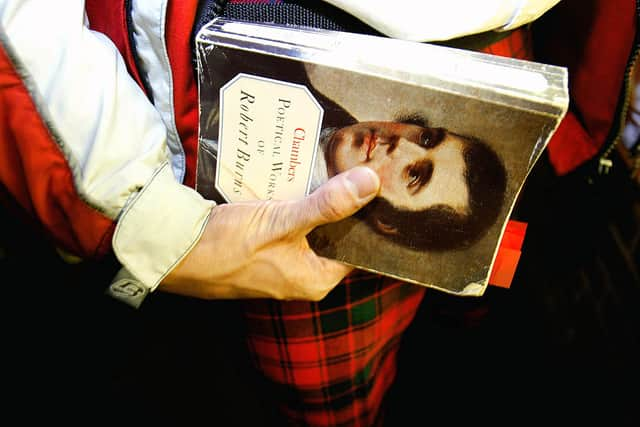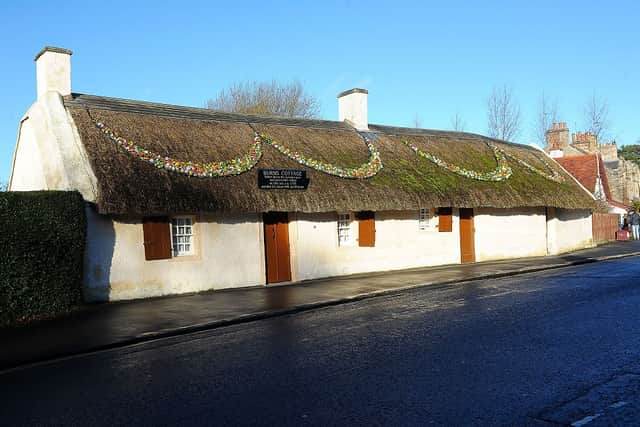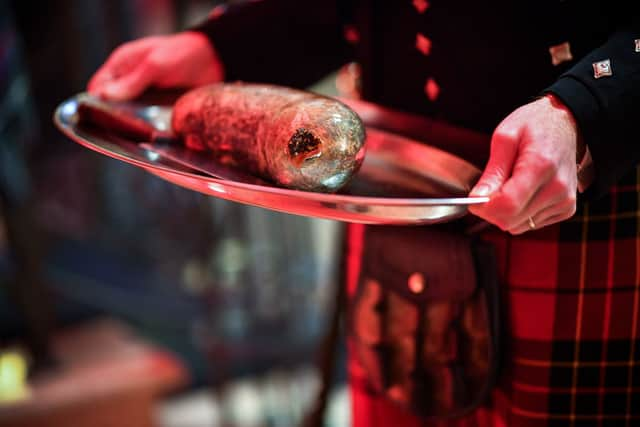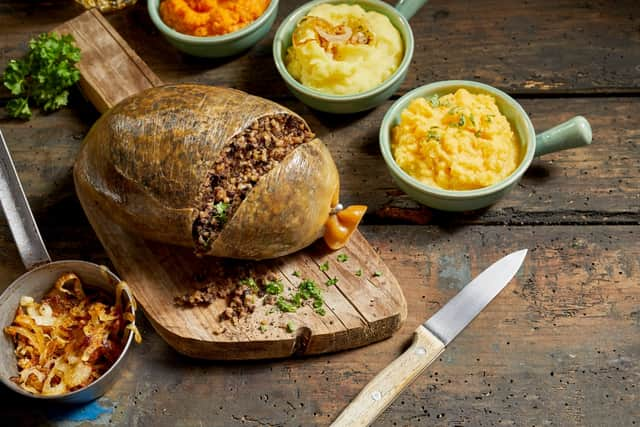Burns Night food: traditional Robert Burns celebration menu explained - why we eat haggis, neeps and tatties
and live on Freeview channel 276
Scotland marks one of its biggest national events every year on 25 January - Burns Night.
Alongside St Andrew’s Day, the annual occasion is a key facet of Scotland’s cultural and historical heritage. The celebration commemorates the life and works of Scotland’s national bard Robert Burns, who penned famous poems like Auld Lang Syne, To A Mouse and Tam O’ Shanter.
Advertisement
Hide AdAdvertisement
Hide AdThe festivities are also closely linked to food and drink, with lots of haggis and whisky consumed. Other dishes based around key Scottish ingredients, like fish, turnips and potatoes, are also eaten.
So who was Robert Burns, what takes place at a typical Burns Night Supper - and what’s on the menu? Here’s what you need to know.
Who was Robert Burns?
Robert ‘Rabbie’ Burns was a poet who was born near Ayr on 25 January 1759. He composed poetry and songs throughout his life, but also worked as a tenant farmer and exciseman. Burns’ works celebrated Scotland’s rural experience, traditions and culture, while also reflecting on class and religion.


The more than 550 poems and songs he penned in the Scots dialect have led to him being considered as Scotland’s national bard and are a key aspect of the country’s national identity. While he was just 37 years old at the time of his death on 21 July 1796, Burns’ works went on to inspire some of the UK’s most famous poets, including William Wordsworth and Samuel Taylor Coleridge.
Advertisement
Hide AdAdvertisement
Hide AdThe works live on to this day in their own right. For example, Auld Lang Syne is sung in English-speaking countries around the world at the turn of the New Year and Burns Night is widely celebrated in Scotland, and further afield in countries like the US, on the poet’s birth date.
What is Burns Night?
Burns Night and its Burns Supper originated after Robert Burns’ death. It began when groups of his friends and acquaintances started to gather in his memory. What is believed to have been the first Burns Night was held in July 1801 at the bard’s cottage in Alloway, near Ayr.
Nine of Burns’ friends gathered there for a feast of haggis and also enjoyed performances of his work. It is there that a speech in honour of their friend was given, which is now a key part of a Burns Supper known as the ‘Immortal Memory’. The following year, they held the event on what would have been his birthday, and thus the tradition was born.


Nowadays, there are formal Burns clubs which will mark the celebration, while some restaurants offer their own Burns Night events. Most people celebrate the event at home with friends and family.
Advertisement
Hide AdAdvertisement
Hide AdA traditional running order for the night sees the host address their guests before the Selkirk Grace - a poem attributed to Burns - is read aloud. The meal is then served, with the host performing the Burns poem Address to a Haggis before everyone tucks in.
After eating, a recital of one of Burns’ works is given before the Immortal Memory speech, made in tribute to the bard, is delivered. Another speech - the Toast to the Lassies - then follows. This speech is intended to be a thank you to the host, as well as an amusing and affectionate reflection on women with reference to Burns’ works.
This speech is then followed by the Reply to the Toast to the Lassies, during which the tables are turned on the men. A final Burns reading is then performed. At the end of the night, guests will traditionally sing Auld Lang Syne while holding hands with their arms crossed - something that has also come to be a big feature of New Years Eve celebrations around the English-speaking world.
What is Burns Night food?
Typically, a three-course meal will be served up on Burns Night. All the dishes tend to showcase the best of Scottish fresh produce, from smoked fish to turnips - also known as neeps.
Advertisement
Hide AdAdvertisement
Hide AdThe first dish is traditionally Cullen skink. This is a thick, creamy soup made using smoked haddock, potatoes and onions. Other Scottish soups, like a Scotch broth, may also be served up.


The main course is then centred around haggis, or as Burns referred to it: “the great chieftain o’ the puddin-race”. As well as being considered to be Scotland’s national dish, thanks in part to Burns, the combination of seasoned heart, liver and lungs of a sheep or calf mixed with suet, onions and oatmeal boiled in an animal’s stomach was a key source of affordable nutrition during Burns’ lifetime.
It is typically eaten on Burns’ Night because the poet himself wrote that he was a fan of the dish in his poem Address to a Haggis. Nowadays, vegetarian haggis is available from most supermarkets and substitutes the meat elements for various pulses, nuts and vegetables.


Haggis is usually served alongside neeps and tatties - a combination of mashed turnips and mashed potatoes - and a dram of whisky, which can either be drunk or thrown over the haggis.
Advertisement
Hide AdAdvertisement
Hide AdA Burns Night pudding traditionally consists of clootie dumpling - a sweet treat best described as a cross between a carrot cake and a fruit cake. The dish contains raisins, sultanas, cinnamon and treacle.
Another dessert that may be served is a cranachan - otherwise known as a tipsy laird - which is essentially a whisky trifle. By the end of the night, you may find yourself struggling to fit into your kilt.
Comment Guidelines
National World encourages reader discussion on our stories. User feedback, insights and back-and-forth exchanges add a rich layer of context to reporting. Please review our Community Guidelines before commenting.
